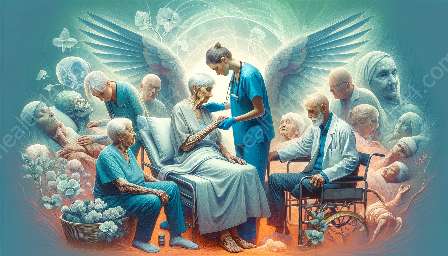Smart home technology is revolutionizing the way we approach fall prevention for aging in place, offering innovative solutions to enhance safety and independence for older adults. This article will delve into the intersection of gerontechnology and geriatrics, exploring how smart home devices and systems can support aging individuals in maintaining a secure and comfortable living environment.
Understanding Aging in Place
Aging in place refers to the ability for seniors to live independently in their own homes for as long as possible, rather than moving to a healthcare facility or assisted living. It encompasses creating a living space that adapts to the changing needs of older adults, focusing on safety, accessibility, and comfort. The integration of smart home technology can significantly contribute to achieving these goals, particularly in the context of fall prevention.
Smart Home Devices and Systems
Smart home technology encompasses a wide range of devices and systems that are designed to automate and streamline various aspects of home management. These devices can monitor and regulate environmental conditions, provide security features, and offer assistance with daily tasks, making them particularly valuable for older adults aiming to maintain their independence.
Some common smart home devices that can contribute to fall prevention include:
- Fall detection systems
- Motion sensors
- Smart lighting
- Smart thermostats
- Video monitoring and surveillance
- Emergency call systems
These devices are instrumental in identifying potential fall risks, providing immediate assistance in the event of an emergency, and creating a secure living environment.
The Role of Gerontechnology
Gerontechnology, the study and development of technology tailored to the needs of older adults, plays a crucial role in the advancement of smart home solutions for aging in place. It focuses on understanding the aging process and developing technology that addresses the challenges and opportunities associated with aging. By leveraging gerontechnology, smart home devices can be tailored to meet the specific needs of older adults, ensuring that they are user-friendly, accessible, and effective in promoting safety and well-being.
Integration with Geriatrics
In the field of geriatrics, which focuses on the medical care of older adults, the integration of smart home technology is seen as a promising approach to improving patient outcomes and quality of life. Healthcare providers are increasingly recognizing the potential of smart home devices in preventing falls, managing chronic conditions, and facilitating remote monitoring, all of which are essential components of comprehensive geriatric care.
Benefits of Smart Home Technology for Fall Prevention
Embracing smart home technology for fall prevention offers numerous benefits, including:
- Enhanced home safety and security
- Real-time monitoring and assistance
- Promotion of independent living
- Early detection of health issues or emergencies
- Reduction of caregiver burden
- Improved peace of mind for family members
These benefits contribute to a holistic approach to aging in place, supporting older adults in maintaining their autonomy and dignity while ensuring their safety and well-being.
Conclusion
Smart home technology has the potential to significantly impact fall prevention and aging in place for older adults. By integrating gerontechnology and considering the specific needs of geriatrics, smart home devices and systems can create a supportive and secure environment that enables seniors to live independently and safely within their own homes. The ongoing advancements in this field continue to pave the way for innovative solutions that enhance the quality of life for aging individuals.


